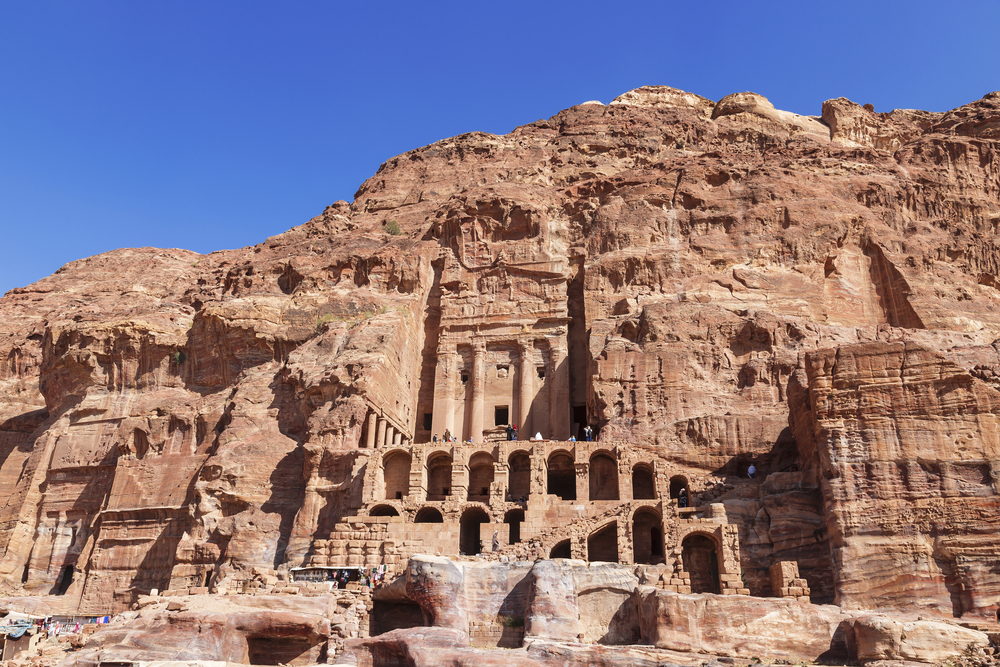Ancient Tomb with 12 Buried Bodies Found in Petra
Posted on Categories Discover Magazine

The human remains of 12 individuals have been discovered in a chamber in the well-known Petra in Jordan.
Petra, one of the new seven wonders of the world and a UNESCO World Heritage site, was the capital of the Nabatean Kingdom, which lasted from roughly 400 B.C. until the Romans absorbed the Kingdom as a province in the beginning of the second century A.D.
“Complete burial sites are not a common thing in Petra,” says Richard Bates, a geophysicist at St. Andrews University in Scotland who has worked on the recent discoveries.
Researchers are still analyzing the remains to learn more about them, but they have discovered a few things about the people who were buried in the chamber known as the treasury.
Who Were the Buried Bodies in the Petra Chamber?
Both adults and children are part of the human remains — but researchers still don’t know whether they are men or women. The team dated the remains between 100 B.C. and 100 A.D., which was right around the time when the Nabatean Kingdom was at its peak.
The fact that these people were buried in this chamber means they likely held some status in the kingdom.
“It wouldn’t just be anybody being buried there — they must have been somewhat significant in society,” Bates says.
Some of the teeth of the remains have been taken to labs for DNA analysis to learn more.
Read More: Where Did the Nabataeans Come From?
A Surprising Archaeological Find
Researching erosion at Petra was the original reason for Bates and researchers to analyze the chambers. The team used electromagnetic ground-penetrating radar in the various chambers in the Treasury (al Khakzneh).
The devices revealed that there were several voids beneath some of the rock floors in one of the lower chambers — an indication that there could be graves underground. Archaeologists came into dig, and discovered a series of partitioned graves, a little like stone cubicles in an office.
The remains from multiple people were found in each partition. A flagstone capped each of the stone partitions.
Read More: How Were These 4 Iconic Ancient Stone Structures Built by Early Civilizations?
Re-opening the Chamber in Petra
The strange thing about the grave cavities, Bates says, was that their research team wasn’t the first to open it. It appears someone else opened the chamber about 25 years ago or so and then resealed it.
Bates says it’s surprising that a grave site found in well-known Petra would be opened then resealed without any further investigation, or with no known reporting. It’s unclear whether anything was taken, but the graves themselves seem to have been undisturbed.
“It hasn’t been massively disturbed or robbed out,” Bates says. “The bodies were in a state of completeness, although of course if there is anything missing, we’ve got no idea of what that might be.”
Read More: 5 of the World’s Wonders That You Can See Today
Ancient Artifacts Alongside the Bodies
The remains were also buried with artifacts. One appears to be a chalice that looks like the fictional version of the Holy Grail depicted in Indiana Jones and the Last Crusade. But Bates says it’s the neck of a large ceramic pot that had been broken off and just looks like a chalice. Other shards of pottery are scattered throughout the area as well.
But more research is needed, as the graves themselves are only partially excavated at this point.
Overall, Bates says that the discovery of these graves confirms that the treasury was a tomb. This will help reveal more about Petra and the Nabatean Kingdom, which isn’t as well-known as other civilizations such as Ancient Rome and Egypt.
“[The remains] will now have a proper investigation,” he says.
Read More: What 4 of the Oldest Grave Sites Tell Us About Ancient Civilizations
Article Sources
Our writers at Discovermagazine.com use peer-reviewed studies and high-quality sources for our articles, and our editors review for scientific accuracy and editorial standards. Review the sources used below for this article:
Joshua Rapp Learn is an award-winning D.C.-based science writer. An expat Albertan, he contributes to a number of science publications like National Geographic, The New York Times, The Guardian, New Scientist, Hakai, and others.